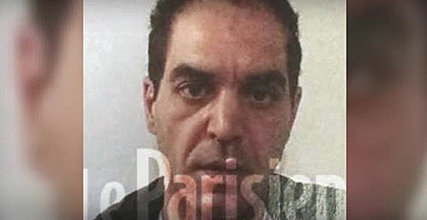
A petty criminal one day and a terrorist the next – for many people, this seems like an inexplicable leap. How did Zied Ben Belgacem, the Paris Orly attacker, with little to no understanding of geo-politics or Islam, suddenly become a terrorist? What do we know about Zied then and does his profile make sense, within the wider public’s understanding of what an Islamist terrorist is?
Let’s break this down then: already, early investigative work reveals his frantic last texts and calls to loved ones: “Dad, I’ve done something stupid….Daddy, please forgive me, I’ve screwed up.” Is this the hallmark of an operationally capable terrorist? The last text, for example, from the Bataclan attackers in Paris 2015, read simply and chillingly: “Okay, let’s go.”
We also now know that Zied’s toxicology read out showed high dosages of alcohol, cocaine and cannabis – police records show a history of drug dealing, armed robbery and theft – and intelligence packets reveal he was on the police radar and had brush contact with extremists in prison. In short, this is what we’d call a classic “crime-terror” nexus.
Zied is in fact part of an increasing and chartable trend within counter terrorism: criminality, prison, radicalisation and terrorism. In Europe, the past 45 individuals out of the last 79, most recent, terrorist profiles, have been incarcerated. Prisons, gangs and criminal groupings are the recruiting vendors for groups such as Isis. “Sometimes people with the worst pasts create the best futures”, reads a 2014 ISIS recruitment poster.
To break this down further, we can broadly identify two main reasons why the crime-terror nexus has become so prevalent: practicality, prison and psychology-priming. On the practical then, criminals, or people within criminal social networks, have access and sometimes experience within illicit activities. Getting hold of firearms, drugs, cash and forged documentation are all incredibly useful to would-be terrorists and extremists. Already knowing how to evade police capture and independently resource your activities is invaluable. Equally, some people within these networks may have already been socialised or exposed to violence – this makes the repeating of it considerably more likely.
Prison is where this experience can be connected and fine tuned into a “higher purpose.” For the recruiter, vulnerable people and gang members are ideal recruits – they are people who may require protection when inside or validation that their lives can have purpose – and that the state has always been “against them”. The dangling of religion and ideology forms what we might call a “tangible legitimiser” of past and future behaviours.
At the moment of entry and the moment of exit, a potential recruit is at their most vulnerable to an approach by extremist recruiters. The injection of ideology and narrative is therefore important, but it is the experience of vulnerability, criminality and “victimhood” – which means that it meets fertile ground psychologically.
Finally, these two factors fuse together to create a psychology which is primed to activate violently, sometimes at incredibly short notice. In some cases, we’ve seen suspects go from radicalisation to terrorism within just two weeks. But they all had prior run ins with both criminal networks, the law and family instability. Zied is a prime example of this. From “zero to hero” in the space of days. The knowledge that his acts will catapult him into media fame and jihadist acclaim also contributes significantly to the decision of these fragile “lone actor” attackers, to end their lives with something which gives them meaning, however fleeting.
Confronting this, particularly within prison, is a very real challenge. For many years, we have attempted to deconstruct ideology and narrative with an influx of Imams and “moderate teachings”. However, this approach has failed to address the unique cocktail of factors which form within prisons and their crossovers between crime, narrative and emotional wellbeing. A holistic approach is needed and one which is just as relevant to gang and drug rehabilitation and reintegration, to that of extremism and terrorism. Vocational skills, confidence building and peer to peer support, is just as important as deconstructing ideology and moderate religious practice.
Zied may now be classified as a terrorist, but to have prevented his escalation we would have needed to intervene during his earlier years of instability – far before he made contact with extremists and Islamists. Cross-pollinating counter terrorism efforts with agencies which deal with unstable and criminal individuals is therefore vital in this new stage of self-starter terrorism.�
There will always be the hardened and trained terrorists of the likes of the Bataclan, but the far more numerous and the far more hard to detect will always be the likes of Zied Ben Belgacem.�
Source: Joshua Stewart
